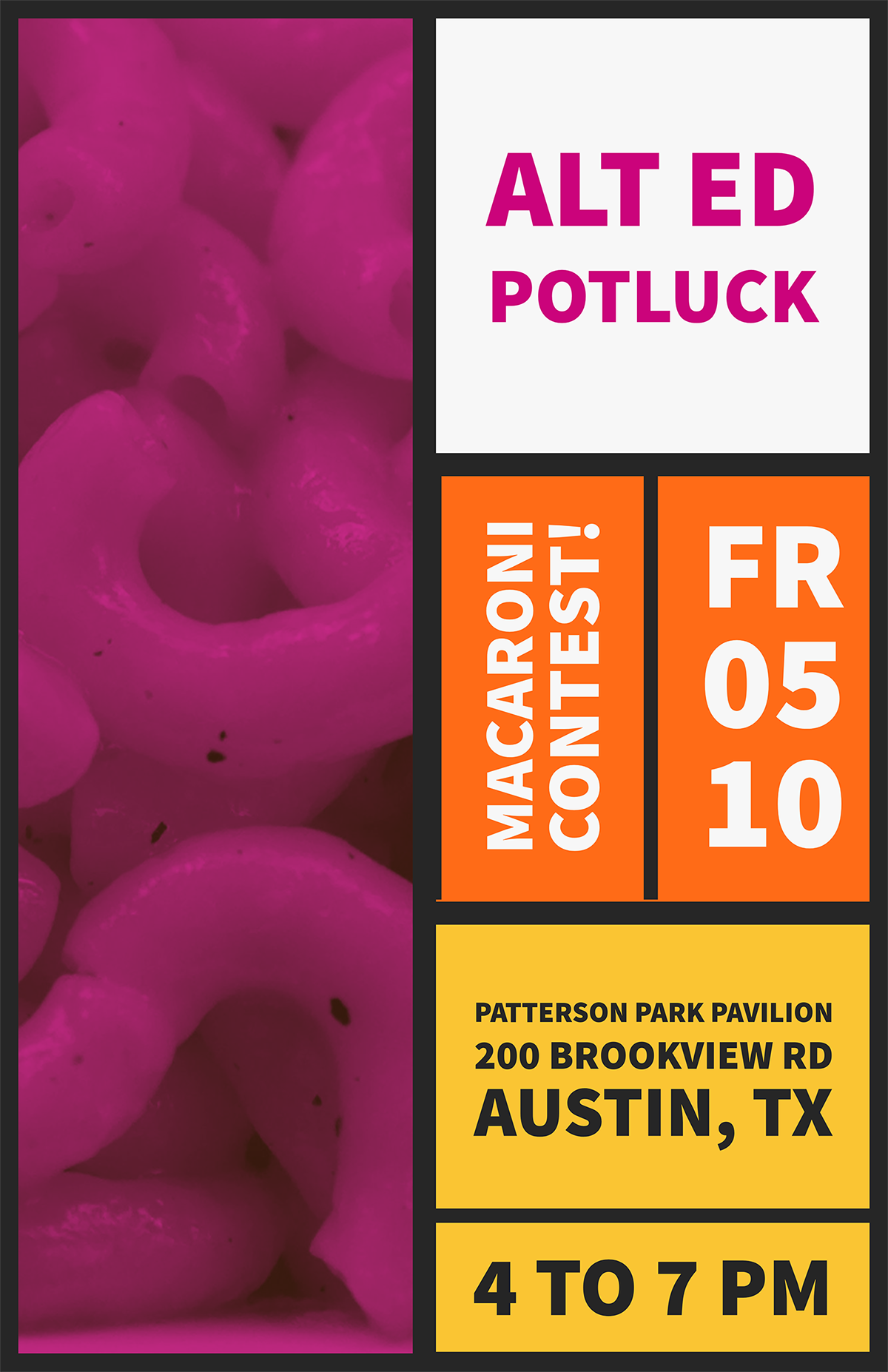How to build community among alternative schools? Put the kids in charge!
/Guest contributor Peter Fox is a high school student at the Academy of Thought and Industry in Austin. When I heard about the multi-school prom he and his fellow students were organizing this spring, I invited him to share the story with our readers. We love seeing this kind of collaboration in the alt ed community. Thanks, Peter, and congratulations on a job well done!
I first joined the Austin alt ed community in November of 2018. Due to a variety of factors, public school seemed to no longer be a good fit. When my family and I looked at a number of different schools, the Academy of Thought and Industry (ATI) seemed to be the way to go. Although I quickly enveloped myself in the ATI community, one distinct issue became clear to me as I continued my foray into the alternative education scene: there are no Friday night lights in alt ed. In public school, we always enjoyed the fact that there were many other schools in the area. Sure, we may have been rivals, but oftentimes we had friends at these separate schools. We were all practically a huge community. In the Austin alt ed scene, that sense of community did not exist—yet.
Fast-forward to February of this year. At ATI, we are highly independent students. In our school-wide Life Design class, we faced the daunting prospect of taking on a project that we would be working on for the rest of the semester. Our only restriction was that our project, whatever we chose, had to in some way better our community. When I heard the idea of a shared prom between alt ed schools, I knew I had to have a part in it. An alt ed prom could begin to fill the void of organized events among alternative schools in Austin. It would not only impact our small school community but potentially many other school communities in our area. It was the perfect solution to the problem I saw.
And so, we set out. With a grim amount of work in the short time ahead of us, our initial committee immediately brainstormed on how we could plan such a complicated event in a month and a half. It was decided to split up the tasks among four committees: a logistics group, in charge of finding a venue and food; a finance group, who would handle our budget; a decor group, tasked with decorating our prom; and, last but certainly not least, a programming group, for scheduling the event itself and gathering necessary equipment. However, we were still missing one critical element: a project manager—somebody who would keep everything running smoothly and every part moving in sync. After little deliberation, my friend Samantha and I volunteered to take on this role, with Samantha handling the creative oversight and me handling logistical items. Finally, we could begin work.
I first drafted a schedule for every workday we had until prom, complete with deadlines, due dates, and deliverables. This would make sure we could keep track of every aspect that comes with event planning. We then formed committees, and immediately began work on our first deliverables. At the same time, we began reaching out to alternative schools around Austin, asking if they were interested in our prom or any sort of future alt ed event. Spring Break came and went, and when we returned to school, we found that two alt ed schools wanted to join us: Clearview Sudbury School and Lake Travis STEM Academy.
That was when I realized: this is actually happening, and we have to deliver. With renewed energy and added pressure, I sent a small group of people (including our amazing guide Chris Ready) to Clearview to gauge their interest level. The findings were amazing and slightly surprising: the students we spoke to felt the same lack of a larger community beyond their own school and not only wanted to attend the prom, but help plan it. The next day, our Clearview friends visited ATI to work with us on several aspects, such as our theme and possible icebreakers and activities during the prom itself. The time flew by, and soon we were working with Clearview, Lake Travis STEM, and even homeschool students to design our perfect prom.
After months of preparation, the night had finally arrived. We began setting up at 2pm, and the prom officially began at 7:30. We saw our efforts pay off and reaped the rewards in a night of fun and celebration. During a short break, I looked around the room, and what I saw was surprising and satisfying. Students from all three different schools were joined together in groups on the dance floor.
We had achieved exactly what we set out to do. Our community, during those two hours, was expanded and transformed into something bigger than just us. When we first started working on our prom, we could barely remember each other's names. Now, there was a familiar sense of friendship among everybody on the dance floor, as we enjoyed the fruits of our labor.
So, what’s next? Well, as I put the finishing touches on this post, I’m also sending out an invitation for our next shared alt ed event, a potluck on Friday, May 10. Which, by the way, if you or your school would like to attend, please email me (pfox@thoughtandindustry.com). All are welcome!
Creating these activities and events is such a fantastic learning experience, and honestly, just a fun time. Our mission, as a group of students, is to create the sense of community among alt ed schools that has been to this point exclusive to public schools, and our prom was just the beginning. Stay tuned for future events!
Peter Fox



























